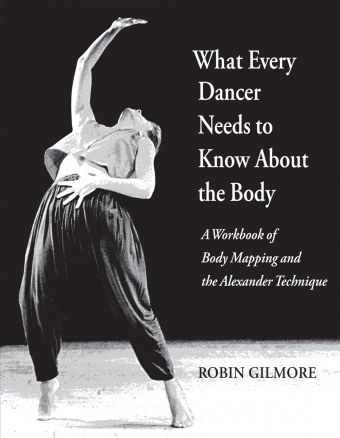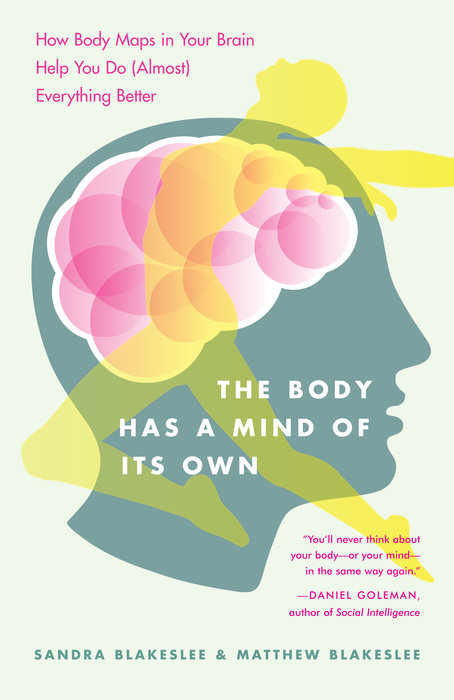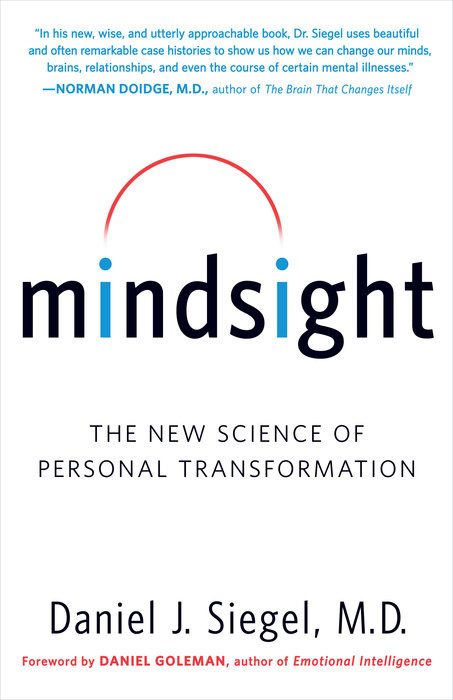
What Every Dancer Needs to Know About the Body: A Workbook of Body Mapping and the Alexander Technique

By Robin Gilmore — 2010
Dancers may have more consciously learned movement patterns than any other profession. Among the many forms and techniques of dance there are often conflicting instructions, and the dancer must translate these ideas into movement and artistry. See more...
FULL SUMMARY
Dancers may have more consciously learned movement patterns than any other profession. Among the many forms and techniques of dance there are often conflicting instructions, and the dancer must translate these ideas into movement and artistry. This book is intended to be a workbook and playbook through which dancers and all movers can improve the quality of their movement. Through clear, concise text, numerous illustrations and guided movement explorations, learn to embody basic anatomy. Decode common dance habits and develop a conscious approach to moving with ease and pleasure. Dancers, dance teachers, and anyone with an interest in the Alexander Technique and movement will want a copy of What Every Dancer Needs to Know About the Body.
YOU MIGHT ALSO LIKE
CLEAR ALL
BY TOPIC
BY TYPE
FILTER

TOPIC
- Anxiety (29)
- Self-Healing (28)
- Neuroscience (25)
- Stress Management (23)
- Peak Performance (21)
- Somatic Practices (19)
- Stress (19)
- Illness and Injury (18)
- Mindfulness (18)
- Depression (17)
- Grit (17)
- Resilience (17)
- Meditation (16)
- Motivation (16)
- Parenting (16)
- Awareness (15)
- Diet and Nutrition (15)
- Honoring Emotion (15)
- Trauma Healing (15)
- Bodywork (14)
- Brain Health (14)
- Chronic Health Conditions (14)
- Memoir (14)
- Performance Pressure (14)
- Self-Care (13)
- Self-Discovery (13)
- Addiction (12)
- Kids and Sports (12)
- Chronic Pain (11)
- Goal Setting (11)
- Mindfulness Practices (11)
- Neuroplasticity (11)
- The Feldenkrais Method (11)
- Habits of Mind (10)
- Integrative Medicine (10)
- Self-Development (10)
- Self-Pressure (10)
- Breathwork (9)
- Confidence (9)
- Emotional Intelligence (EQ) (9)
- Gender Discrimination (9)
- Healing Approaches (9)
- LGBTQIA Well-Being (9)
- Self-Reflection Practices (9)
- Women’s Well-Being (9)
- Child’s Emotional Growth (8)
- Endurance (8)
- Finding Meaning (8)
- Happiness (8)
- Inner Peace (8)
- Negative Self-Talk (8)
- Self-Mastery (8)
- Somatic Experiencing (8)
- Spirituality and Health (8)
- Anger (7)
- Cancer (7)
- Competition (7)
- Eating Disorders (7)
- Habit Formation (7)
- Human Potential (7)
- Self-Acceptance (7)
- Transformation (7)
- Aging (6)
- Belonging (6)
- Black Well-Being (6)
- Clinical Depression (6)
- Consciousness (6)
- Embodiment (6)
- Exercise (6)
- Focus (6)
- Growth Mindset (6)
- Leadership (6)
- Neuropsychology (6)
- Psychology (6)
- PTSD (6)
- Search for Purpose (6)
- Self-Love (6)
- Trauma (6)
- Visualization (6)
- Activism/Service (5)
- ADD/ADHD (5)
- Anger Management (5)
- BIPOC Well-Being (5)
- Body Image (5)
- Chronic Anxiety (5)
- Communication Skills (5)
- Empowerment (5)
- Energy Healing (5)
- Epigenetics (5)
- Fear (5)
- Female Empowerment (5)
- Guided Meditation (5)
- Healthy Eating (5)
- Life Challenges (5)
- Neurodiversity (5)
- Optimism (5)
- Positive Psychology (5)
- Quantum Physics (5)
- Racial Discrimination (5)
- Relationship Challenges (5)
- Rolfing (5)
- Self-Actualization (5)
- Self-Realization (5)
- Shame (5)
- Authenticity (4)
- Body Positivity (4)
- Buddhism (4)
- Burnout (4)
- Community Healing (4)
- Conflict Resolution (4)
- Connection with Nature (4)
- Courage (4)
- Decision Making (4)
- Discrimination (4)
- Homophobia (4)
- Inner Strengths (4)
- Joy (4)
- Longevity (4)
- Mental Health Challenges (4)
- Mentoring (4)
- Personal Development (4)
- Positive Self-Talk (4)
- Rest (4)
- Science and Spirituality (4)
- Self-Worth (4)
- Sleep (4)
- Social Justice (4)
- Suicide (4)
- Vulnerability (4)
- Addiction Recovery (3)
- Alexander Technique (3)
- Ayurveda (3)
- Child’s ADD/ADHD (3)
- Cognitive Behavioral Therapy (3)
- Creative Well-Being (3)
- Dreamwork (3)
- Dysfunctional Childhood (3)
- Entrepreneurship (3)
- Failure (3)
- Grief (3)
- Imagination and Creativity (3)
- Imposter Syndrome (3)
- Intention (3)
- Living with Illness (3)
- Managing Energy (3)
- Perception (3)
- Post-Traumatic Growth (3)
- Poverty/Economic Inequality (3)
- Racism (3)
- Rosen Method (3)
- Self-Esteem (3)
- Self-Limiting Beliefs (3)
- Self-Reliance (3)
- Situational Depression (3)
- Spiritual Awakening (3)
- Spiritual Growth (3)
- Spiritual Healing (3)
- Unfulfilled Career (3)
- Veteran Well-Being (3)
- Yoga (3)
- Young Adult Well-Being (3)
- Accepting Love (2)
- Adaptability (2)
- AIDS (2)
- Alcohol Addiction (2)
- Altered States (2)
- Autoimmune Disease (2)
- Biofeedback (2)
- Cannabis/CBD (2)
- Child’s Trauma (2)
- Children’s Well-Being (2)
- Chronic Fatigue (2)
- Cognitive Psychology (2)
- Collaboration (2)
- Compassion (2)
- Compassion Meditation (2)
- Criticism and Rejection (2)
- Disabled Well-Being (2)
- Domestic Abuse (2)
- Empathy (2)
- Fatigue (2)
- Fellowship and Community (2)
- Forest Bathing (2)
- Forgiveness (2)
- Friendship (2)
- Genetics (2)
- Global Challenges (2)
- Gratitude (2)
- Guilt (2)
- Handling a Loved One’s Illness (2)
- Healing Touch (2)
- Inflammation (2)
- Inner Child (2)
- Inner Life (2)
- Intuition (2)
- Jungian Analysis (2)
- Kindness (2)
- Letting Go (2)
- LGBTQIA Sexuality (2)
- Life-Altering Injury (2)
- Love (2)
- Lovingkindness Meditation (2)
- LSD (2)
- Male Friendship (2)
- Massage (2)
- Memory (2)
- Military to Civilian Re-entry (2)
- Movement Meditation (2)
- Mysticism (2)
- Offering Support to Others (2)
- Othering (2)
- Passion (2)
- Performance Anxiety (2)
- Plateauing (2)
- Setting Limits and Boundaries (2)
- Sex (2)
- Sexual Health (2)
- Shadow (2)
- Social Media Addiction (2)
- Social Responsibility (2)
- Talk Therapy (2)
- Taoism (2)
- The Yips (2)
- Tibetan Buddhism (2)
- Trust (2)
- Veganism (2)
- Vegetarianism (2)
- Weight Concerns (2)
- Willpower (2)
- Women’s Rights (2)
- Abandonment (1)
- Acupressure (1)
- Afterlife (1)
- Anat Baniel Method (1)
- Anorexia (1)
- Archetypes (1)
- Art Therapy (1)
- Asking for Help (1)
- Autism (1)
- Awe (1)
- Biohacking (1)
- Body Mapping (1)
- Building Culture (1)
- Chakras (1)
- Changes in Libido (1)
- Child’s Anxiety (1)
- Child’s Autism (1)
- Christianity (1)
- Climate Change (1)
- Codependency (1)
- Cognition (1)
- Collective Trauma (1)
- Curiosity (1)
- Death or Loss of a Loved One (1)
- Disconnection (1)
- Divorce and Breakup (1)
- Doubt (1)
- Dream Analysis (1)
- Drug Addiction (1)
- Ego Transcendence (1)
- Environmental Exploitation (1)
- Facing Own Death (1)
- Faith (1)
- Family Dynamics (1)
- Freedom (1)
- Gender Challenges (1)
- Goddess (1)
- Grace (1)
- Heartmath (1)
- Higher Calling (1)
- Holism (1)
- Holotropic Breathwork (1)
- Hope (1)
- Humility (1)
- Hypnosis (1)
- Immigration and Assimilation (1)
- Indigenous Healing Approaches (1)
- Integrity (1)
- Intergenerational Trauma (1)
- Intimacy (1)
- Jealousy/Envy (1)
- Journaling (1)
- LGBTQIA Children (1)
- Life Force Energy (1)
- Lifestyle Medicine (1)
- Living as an Empath (1)
- Loneliness (1)
- Marriage (1)
- Masculine/Feminine Dynamics (1)
- MDMA (1)
- Medical Intuition (1)
- Mindfulness Meditation (1)
- Moral Philosophy (1)
- Naturopathy (1)
- Near-Death Experience (1)
- OCD (1)
- Parapsychology (1)
- Past Life Regression (1)
- Philosophical Approaches (1)
- Physical Therapy (1)
- Positive Thinking (1)
- Pregnancy and Childbirth (1)
- Psilocybin (1)
- Psychedelic Research (1)
- Psychedelic-Assisted Therapy (1)
- Psychoanalysis (1)
- Qi (1)
- Race and Gender (1)
- Racial Healing (1)
- Raising Daughters (1)
- Relationship with Time (1)
- Reproductive Health (1)
- Ritual (1)
- Romantic Relationships (1)
- Sacred Feminine (1)
- Self-Compassion (1)
- Self-Control (1)
- Self-Expression (1)
- Self-Reckoning (1)
- Sexual Assault or Abuse (1)
- Sexuality (1)
- Shamanic Healing (1)
- Slumps (1)
- Sound Healing (1)
- Spiritual Crisis (1)
- Spiritual Development (1)
- Spiritual Life (1)
- Spiritual Practices (1)
- Spirituality and Politics (1)
- Suffering (1)
- Suicide Loss Survivor (1)
- Synchronicity (1)
- The Unconscious (1)
- Toxic Relationships (1)
- Trauma-Informed Therapy (1)
- Values (1)
- Whiteness (1)
- Wholeness (1)
- Work Challenges (1)
- Work Ethic (1)
- Work-Life Balance (1)
- Youth Activism (1)
FILTER

TEACHER
- Andrew Weil (4)
- Arnold Mindell (4)
- Bernie S. Siegel (4)
- John Sarno (4)
- Reginald Ray (4)
- Daniel Amen (3)
- Don Hanlon Johnson (3)
- Marion Rosen (3)
- Christine Caldwell (2)
- Daniel Goleman (2)
- Daniel J. Siegel (2)
- Jon Kabat-Zinn (2)
- Karla McLaren (2)
- Lisa Feldman Barrett (2)
- Ram Dass (2)
- Richard Davidson (2)
- Rick Hanson (2)
- Alice Miller (1)
- Amy Morin (1)
- Anat Baniel (1)
- Andrew Solomon (1)
- Anne Lamott (1)
- Anodea Judith (1)
- Arianna Huffington (1)
- Ashley Neese (1)
- Bessel van der Kolk (1)
- Billie Jean King (1)
- Blaise Aguirre (1)
- Charles Tart (1)
- Chip Conley (1)
- Christiane Northrup (1)
- Connie Zweig (1)
- Dan Buettner (1)
- Dan Millman (1)
- David Spiegel (1)
- Ellen Langer (1)
- Frederick Alexander (1)
- Gabor Maté (1)
- Gary Zukav (1)
- Geneen Roth (1)
- Huston Smith (1)
- Jack Canfield (1)
- Jack Kornfield (1)
- James Baraz (1)
- James Doty (1)
- James Oschman (1)
- Jan Willis (1)
- Jana Long (1)
- Jane E. Brody (1)
- Joan Borysenko (1)
- Joe Dispenza (1)
- Joel Kahn (1)
- John Wooden (1)
- Kareem Abdul-Jabbar (1)
- Kathlyn Hendricks (1)
- Kathy Freston (1)
- Kelly McGonigal (1)
- Ken Dychtwald (1)
- Kenneth Pelletier (1)
- Larry Dossey (1)
- Leah Guy (1)
- Linda Graham (1)
- Lindo Bacon (1)
- Lisa Wimberger (1)
- Lise Van Susteren (1)
- Lodro Rinzler (1)
- Lori Gottlieb (1)
- Lorin Roche (1)
- Lynne McTaggart (1)
- Mantak Chia (1)
- Mark Victor Hansen (1)
- Martin Seligman (1)
- Michael Phelps (1)
- Mihály Csíkszentmihályi (1)
- Mona Lisa Schulz (1)
- Nicole LePera (1)
- Ondrea Levine (1)
- Paramahansa Yogananda (1)
- Poppy Jamie (1)
- Risa Kaparo (1)
- Ruby Wax (1)
- Rudolph Ballentine (1)
- Shinzen Young (1)
- Simone Biles (1)
- Stanislav Grof (1)
- Stephanie Y. Evans (1)
- Stephen Levine (1)
- Timothy Leary (1)
- William Bloom (1)









